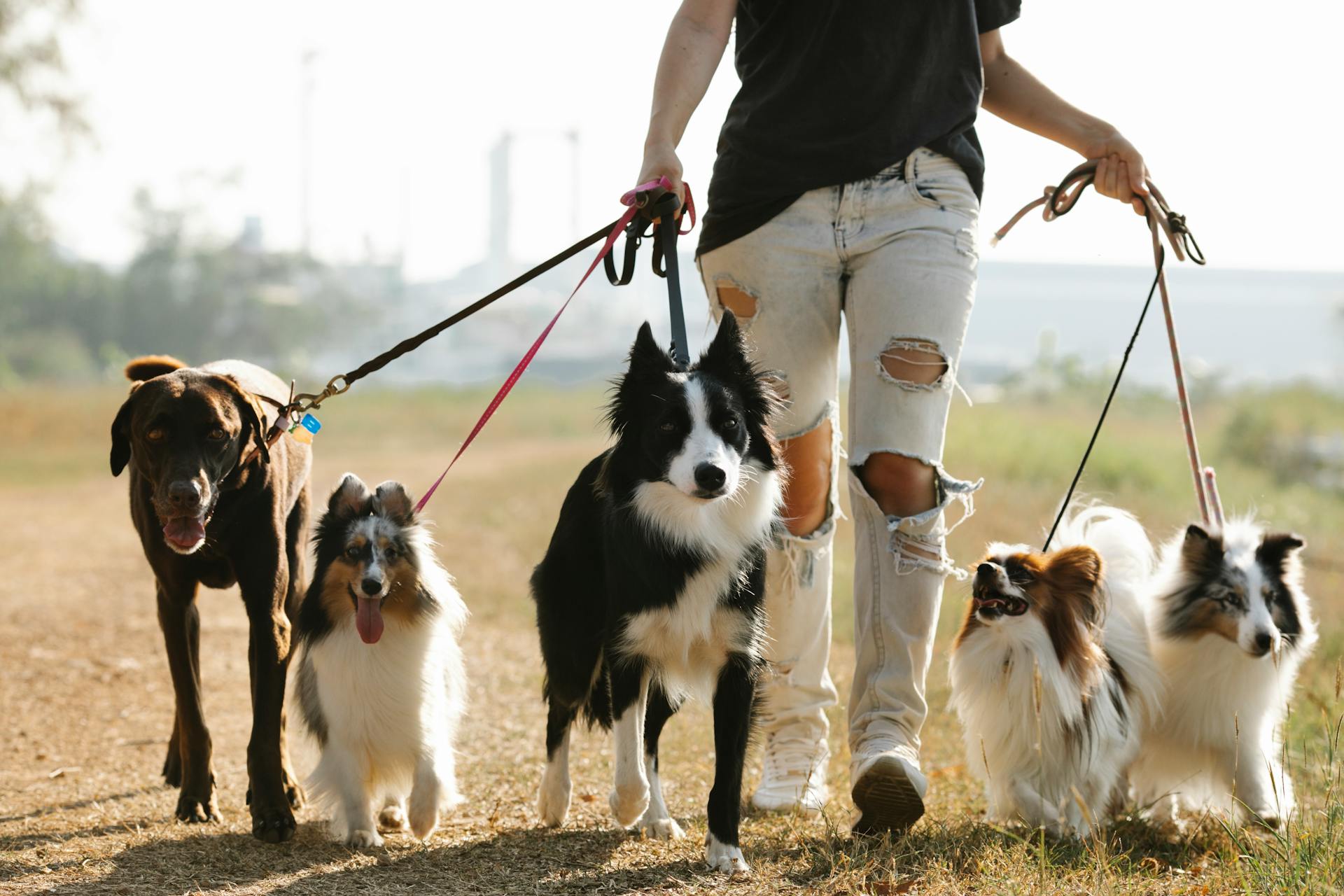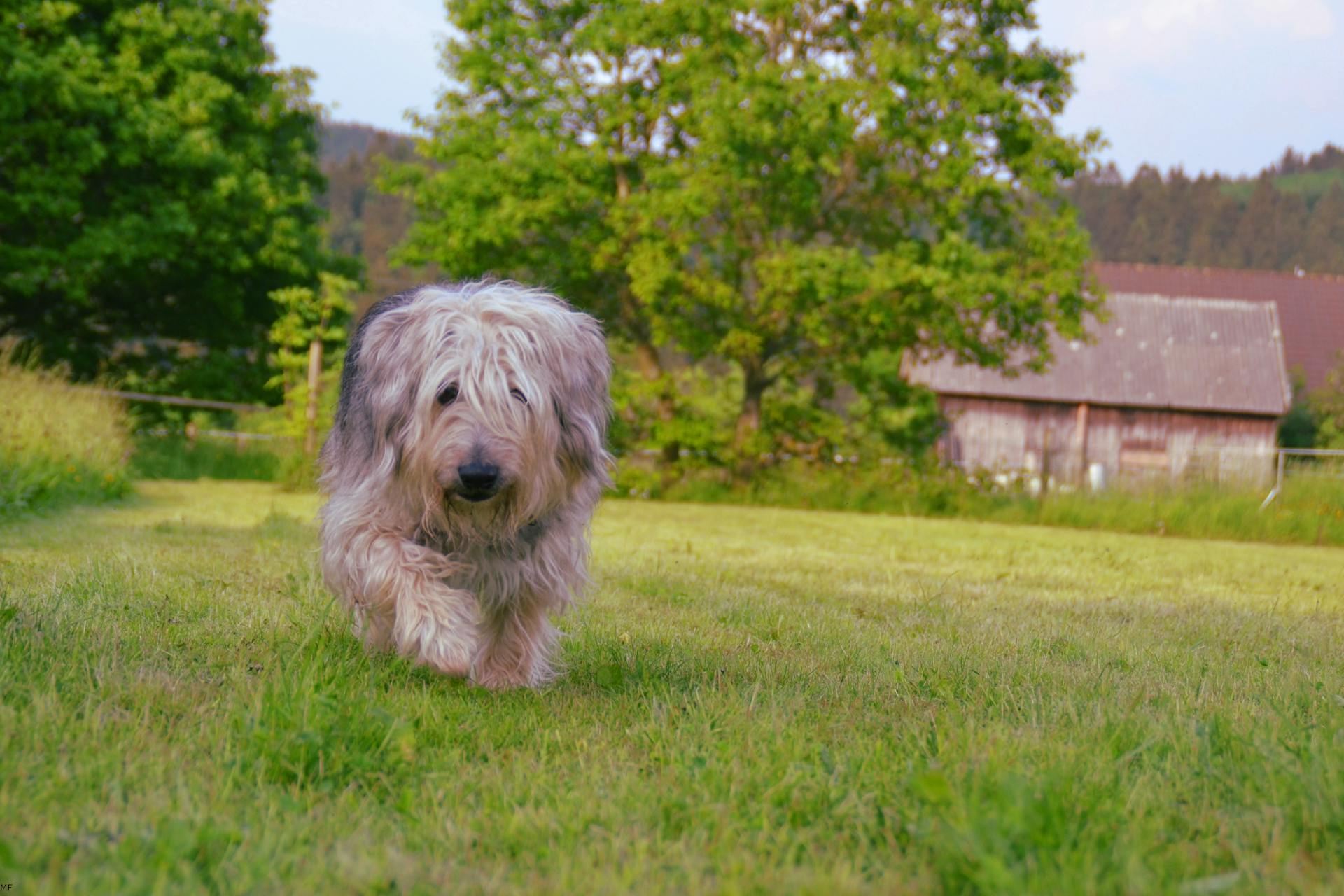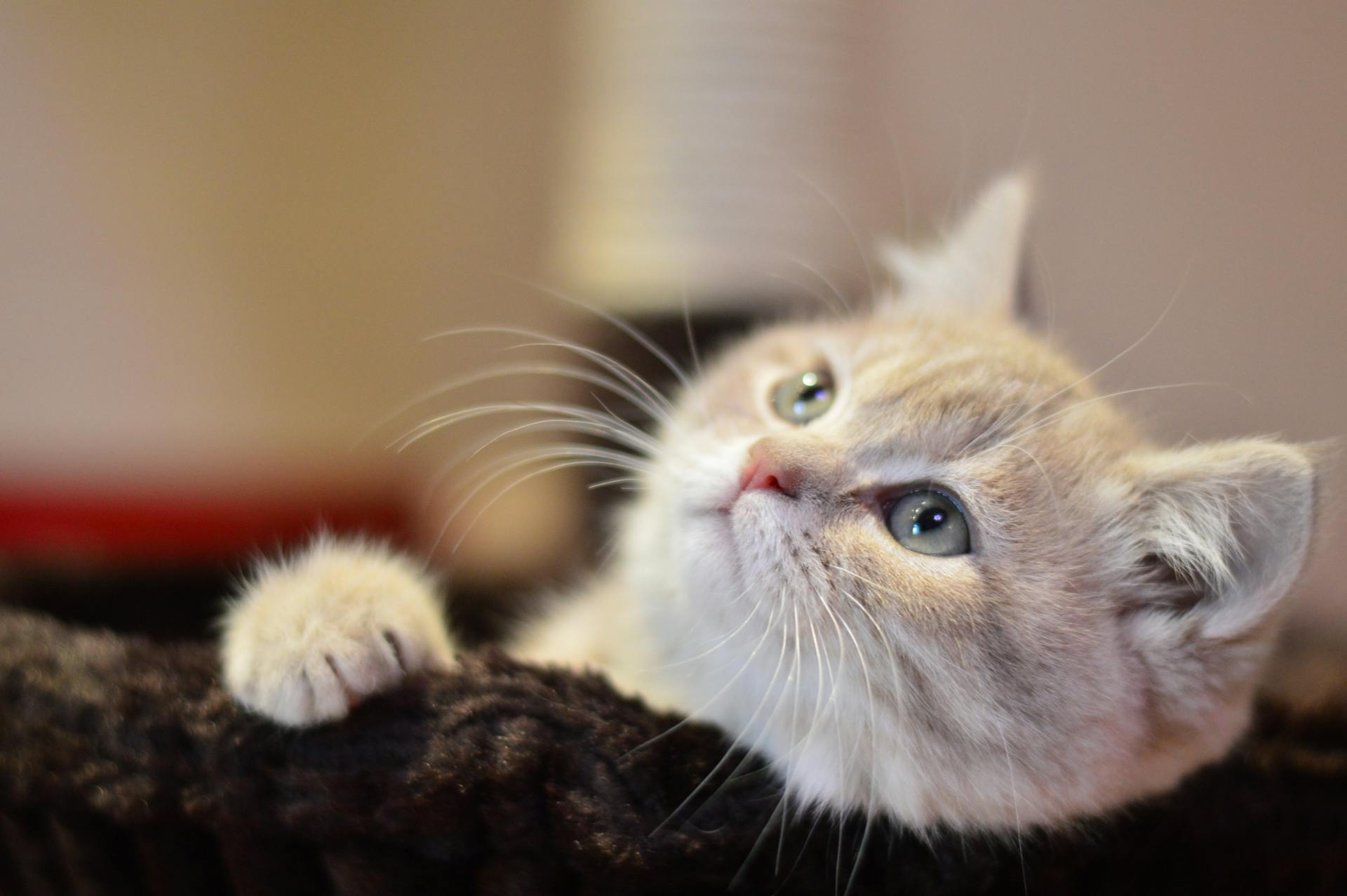
Introducing a kitten to a dog with prey drive requires patience and careful planning. It's essential to start with a slow and controlled introduction to prevent any immediate conflicts.
Dogs with prey drive, such as those bred for hunting, may view kittens as potential prey, which can lead to chasing and potential harm. This instinct can be overwhelming, making it crucial to take steps to ensure a harmonious home.
A good starting point is to keep the kitten and dog separated at first, allowing them to get used to each other's scents and sounds without the risk of an immediate face-to-face encounter. This can be done by swapping their bedding or toys to help them become familiar with each other's presence.
Understanding Prey Drive
Prey drive is a natural instinct in dogs that can be a challenge when introducing a kitten to the household. It's a strong desire to chase, catch, and even eat prey animals, and some breeds are more prone to it than others, such as Greyhounds, Terriers, and Huskies.
Dogs with high prey drive can get overly excited and focused on their surroundings, which can be stressful for cats. If you notice your dog's pupils are dilated and they can't be distracted with treats, it may be a sign of high prey drive.
Some dogs will chase and grab toys, while others will stalk them but never bite. The good news is that with training, you can teach your dog to redirect their energy and focus on you instead of squirrels and other exciting things.
What Is Prey Drive?
Prey drive is a complex behavior in dogs that's hard to define, but it's clear when you see it. A dog with high prey drive acts like they really want to chase, catch, and kill a prey animal.
Certain breeds are more likely to have high prey drive, such as Greyhounds, Terriers, and Huskies. These dogs are naturally inclined to chase and catch small animals.
You can see the differences in prey drive even in young dogs. Some pups will chase and grab a flirt pole, while others will stalk it but never bite. My own border collie loves chasing things, but he's more interested in herding than hunting.
A dog with high prey drive can be stressful for cat owners, and even more so if the dog wants to do more than just chase. If your dog is drooling with dilated pupils and can't be distracted with treats, it's a concerning sign of high prey drive.
It's essential to teach your dog to pay attention to you instead of squirrels and other exciting things. This can help prevent predatory aggression and make your dog a safer companion for cats and other small animals.
Training Prey Drive in Dogs
It's possible to teach a dog with high prey drive to safely live with cats, but it's not easy and not guaranteed.
You can train some high prey drive dogs to live with cats, but not all of them. It's essential to consider the risk and not push your dog to live with a cat if it's not safe.
To train your dog, start by playing the sound of prey (like a cat's meow) while your dog is calmly lying on a mat, then giving your dog a treat. Do this 30 times.
Playing the sound and waiting for your dog to look at you, then giving her a treat, is a crucial step in training. Do this 30 more times, and you can even do it around mealtimes with her dinner as a replacement for treats.
The breed and temperament of your puppy will determine how successful you are at raising them with a cat. Dogs like Beagles, Huskies, Cattle Dogs, Dobermans, Shiba Inus, and Malamutes all have very high prey drives.
If your puppy is one of these breeds, you'll need to be very watchful of their prey drive when raising them with a kitten.
For more insights, see: How to Introduce Puppy to Other Dogs
Read Body Language
A dog's body language can tell you a lot about its interest in a cat. If they don't look away from the cat, it might indicate that they're too excited or aroused.
Observe your dog's head and face. If they appear excessively focused on the cat, try calling them or snapping your fingers. If you can distract them relatively easily, their behavior suggests they don’t have an unhealthy degree of interest in the cat.
A relaxed cat will move about calmly and confidently, won't glare at the dog, and won't try to flee from the dog. If the cat is growling, hissing, or attempting to scratch, it means they're uncomfortable.
Here are some signs of a dog's prey drive:
- Stiffening
- Staring
- Glaring
- Barking
- Whining
A cat's interaction with a dog can change depending on the environment. For example, your cat might be fine with the dog when they're inside the house, but outside in the yard the cat might feel more exposed and therefore show more fear.
If your cat appears relaxed, she should be able to look away from the dog and not show aggression. If she's hissing, puffing her fur, growling, or slinking to the ground, she's feeling scared and not confident.
Preparing for the Introduction
Before introducing your kitten to your dog, it's essential to prepare for a successful interaction. Start by letting your new pet settle in by confining them to an area of the house for a few days where no other pet can enter.
This initial confinement period allows your kitten to get used to its new environment and reduces stress during the introduction process. Confining your kitten to a separate area also helps prevent any potential conflicts with your dog.
To ensure a safe and controlled introduction, consider the size and enthusiasm level of your dog. If your dog is large or especially enthusiastic, leash them as an extra precaution to prevent any accidental harm to your kitten.
Here are some general guidelines for a smooth introduction:
- Separate the pets initially, then use a barrier like a gate or screen door to let them see each other from a distance.
- Start with short sessions and gradually increase the duration.
- Monitor the body language of both pets and stop if you notice any signs of stress.
- Reward calm behavior with treats to create positive associations.
By following these steps and considering your pets' individual needs and personalities, you can set the stage for a harmonious and loving relationship between your kitten and dog.
Introduce Dog to Sight
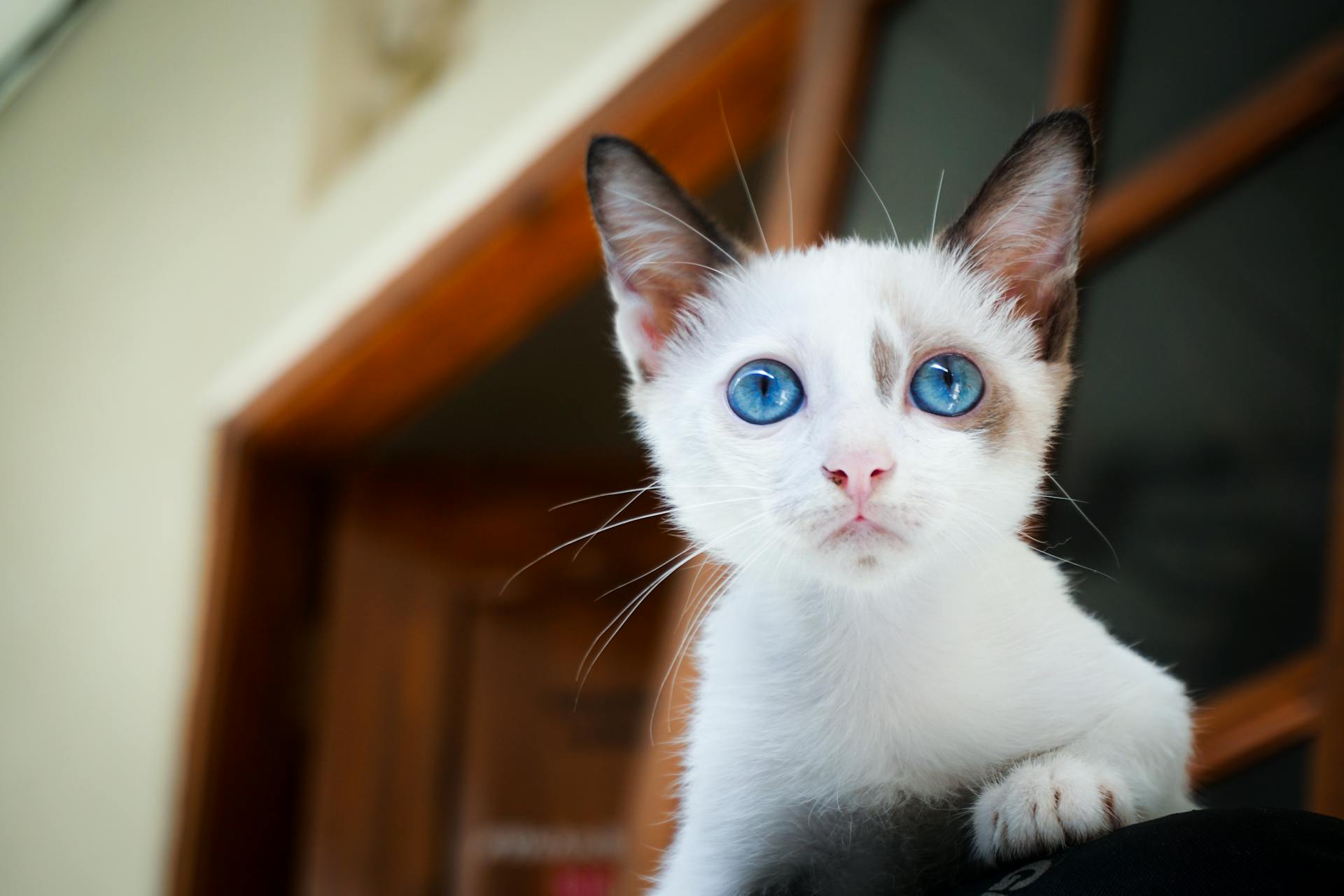
Introducing your dog to the sight of the cat is a crucial step in preparing for their eventual meeting.
Start by using a baby gate and tie-down to create a safe barrier between your dog and cat. This will help keep your dog at a safe distance while still allowing them to see each other. If your cat is likely to jump over the gate, consider stacking the gates or muzzleing your dog to prevent any unwanted interactions.
Feed your dog a meal while they're seeing the cat through the gate. If your dog refuses to eat, you're too close to the cat, and you'll need to give them more space. This is a good opportunity to practice some basic obedience commands with your dog, such as walking with you, responding to training, eating, looking away from the cat, and lying on their mat.
For more insights, see: Is It Safe to Take Dogs to the Dog Park
Before You Start
Before you start introducing your cat and dog, it's essential to consider a few things to ensure a smooth and stress-free process.
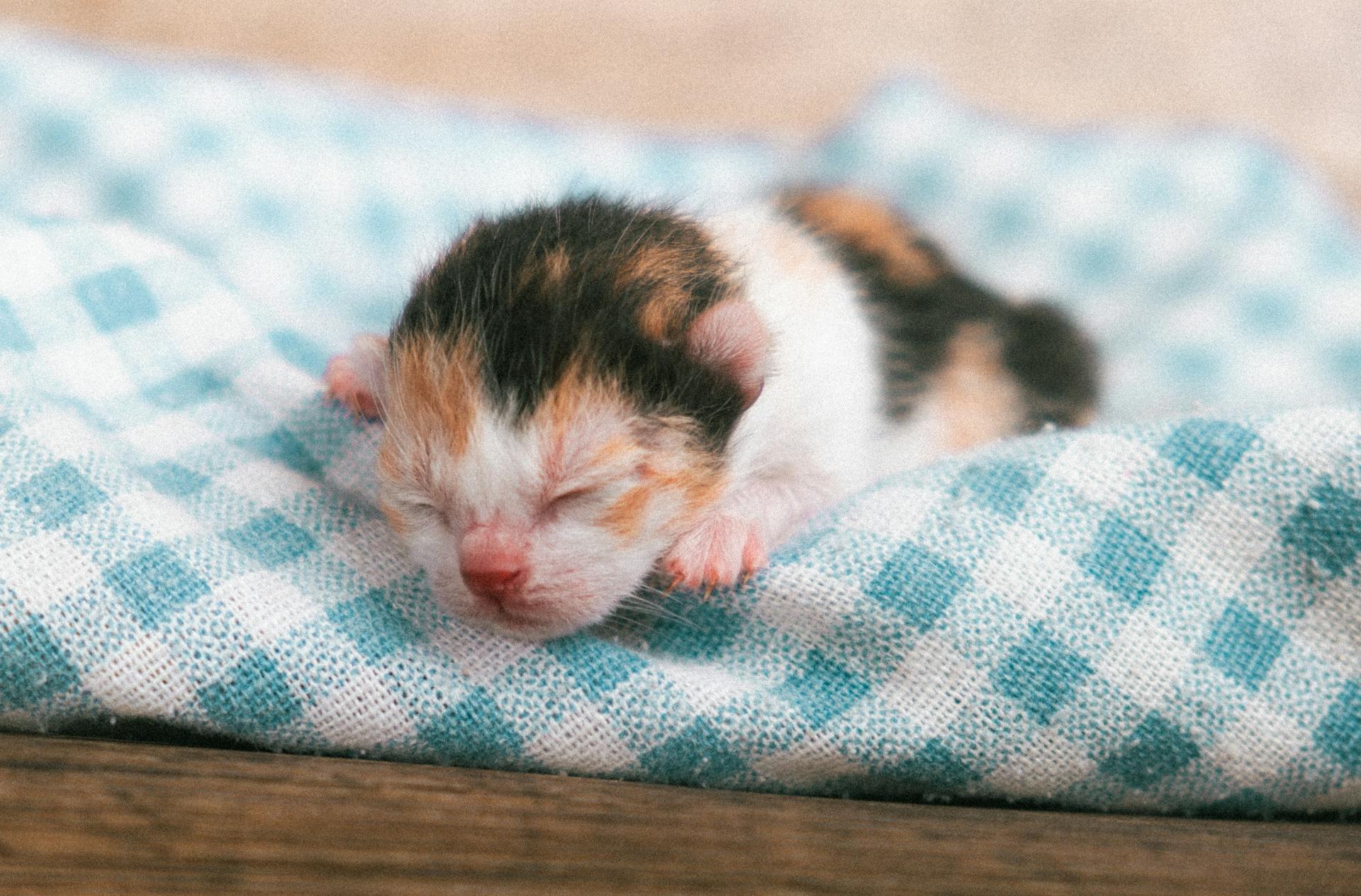
First, make sure your pet gets plenty of exercise and playtime to prevent boredom and frustration, which can lead to aggression towards cats.
A bored or under-stimulated dog is more likely to become easily frustrated by cats in its living space.
If you're introducing dogs and cats for the first time, getting the initial meeting right is crucial to reduce the chances of aggression developing.
Sudden changes can cause your dog to feel threatened and become aggressive.
To avoid this, try putting one pet in a different room with a gate or other barrier keeping them apart.
This will allow your dog to get used to the cat's scent and behavior, understanding that the cat doesn't pose a threat.
Once your dog seems relaxed in the cat's presence, you can try letting them into the same room while observing your dog for signs of anxiety or stress.
If you notice any early signs of aggression from your dog, separate the animals immediately and give your dog a little longer time observing the cat through the barrier before trying again.
On a similar theme: Signs of Prey Drive in Dogs
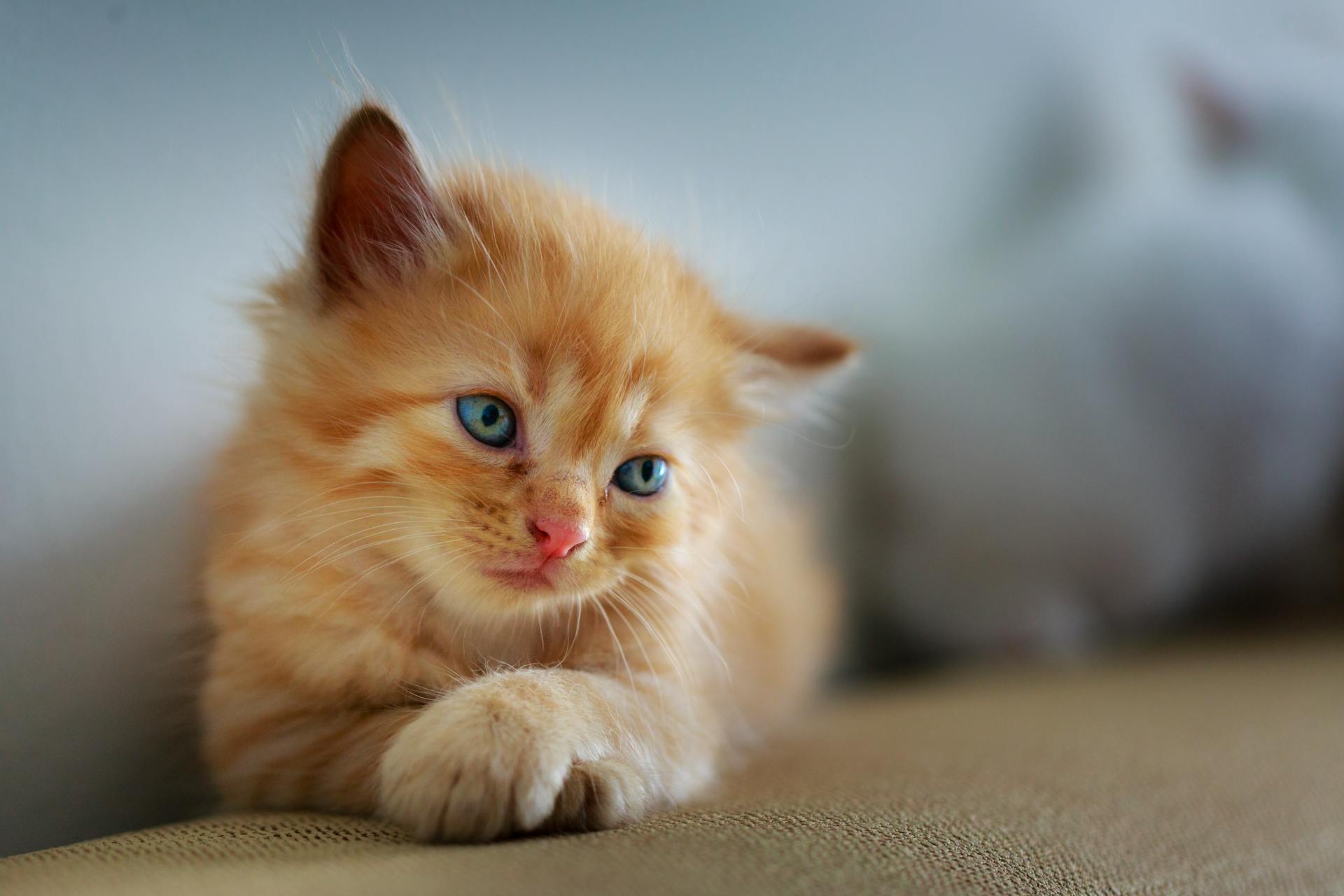
It's also essential to allow your cat time to get comfortable, as its behavior can contribute to your dog's prey drive.
Watch your cat's comfort level just as closely as your dog's before moving forward with face-to-face introductions.
If your dog's behavior is sudden and you suspect they might be sick or in pain, consider seeking veterinary guidance.
Treating your dog's illness or injury may be all that's needed to bring peace and harmony to your home.
Here's a checklist to help you prepare:
Ensure your pet gets plenty of exercise and playtimeProvide a separate room for each pet with a barrier between themObserve your pets' behavior and body languageSeek veterinary guidance if your dog's behavior is sudden or aggressive
Best Dogs to Raise
If you're looking for breeds that are relatively low-maintenance when it comes to introducing a cat to the family, you might want to consider Labradors. Their strong social instincts make them more likely to get along with cats.
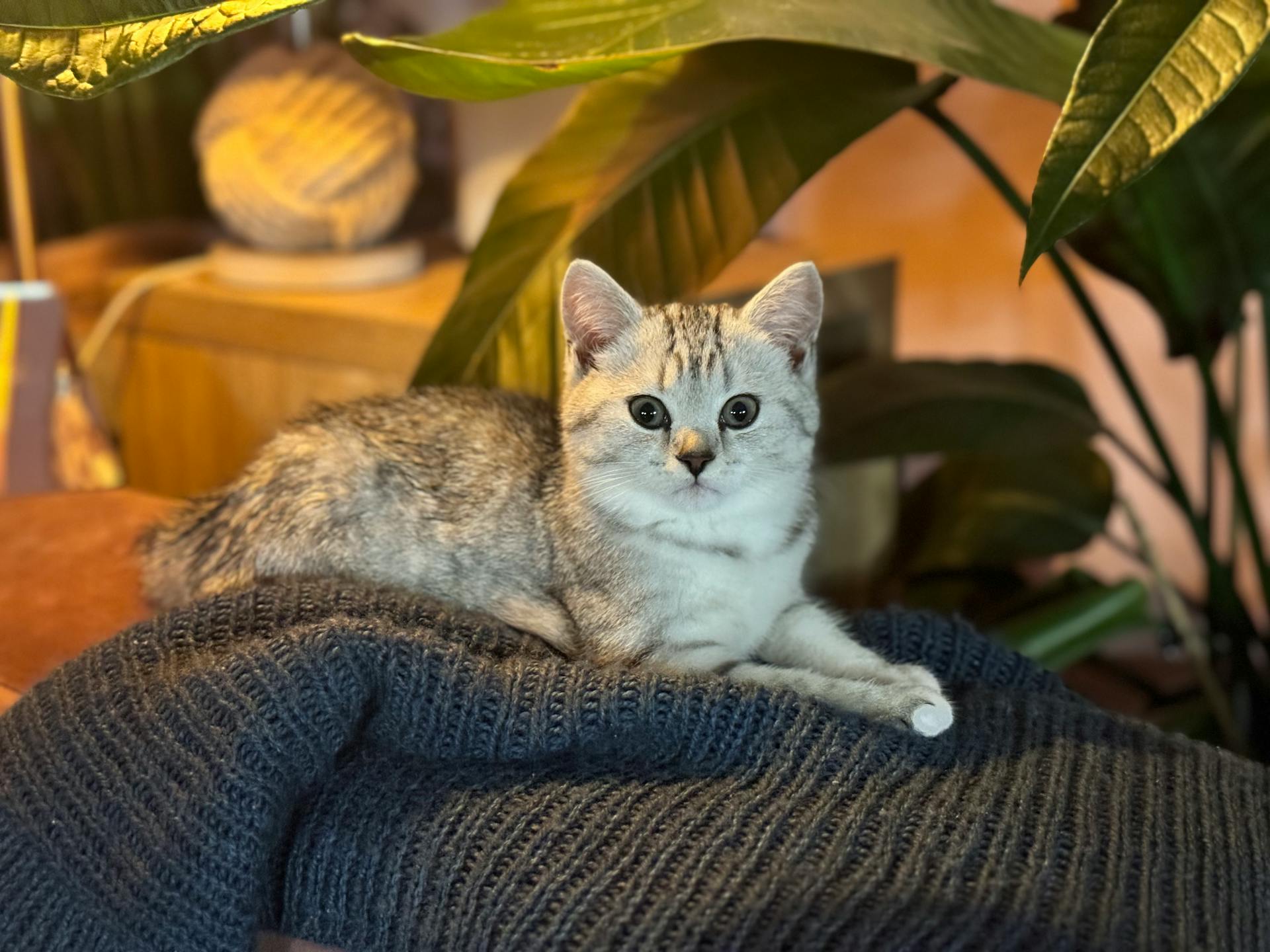
Dogs like Labradors, Golden Retrievers, and Cavalier King Charles Spaniels tend to have lower prey drives, which means they're less likely to view your cat as prey. This makes them a great choice for households with both dogs and cats.
However, it's still essential to introduce them slowly and under controlled circumstances to ensure a smooth transition for both pets.
Raising a Puppy & Kitten
Raising a puppy and a kitten together can be a great way to create a lifelong bond between the two pets. However, it's essential to consider the individual personalities and needs of each pet.
The first step in preparing for the introduction is to let your new pet settle in by confining them to an area of the house for a few days where no other pet can enter. This allows them to get used to their new surroundings without feeling overwhelmed.
It's also crucial to consider the breed and temperament of your puppy, as it will determine how successful you are at raising both pets together in the long term. A dog's prey drive, which is their instinct to hunt, can be a major factor in how well they get along with a kitten.
Curious to learn more? Check out: How to Introduce Reactive Dog to New Person
Some dog breeds, such as Beagles, Huskies, Cattle Dogs, Dobermans, Shiba Inus, and Malamutes, have very high prey drives and may not be suitable for living with a kitten. If you're considering one of these breeds, you'll need to be extra careful to monitor their behavior around your kitten.
To introduce your puppy and kitten safely, start by setting them up in connected rooms with a baby gate separating them. This allows them to get used to each other's presence without feeling threatened.
Here are some key things to keep in mind as you introduce your puppy and kitten:
- Start with short sessions and gradually increase the time they spend together
- Watch for signs of stress, such as hissing or growling, and separate them if necessary
- Reward calm behavior with treats and praise
- Consider using a muzzle on your puppy if they have a high prey drive
Remember, every puppy and kitten is different, so be patient and flexible as you work on introducing them to each other.
Introduce Them Slowly
Let your new pet settle in by confining them to an area of the house for a few days where no other pet can enter. This will give them a safe space to adjust to their new surroundings.
Consider reading: How to Introduce Dog to New Person
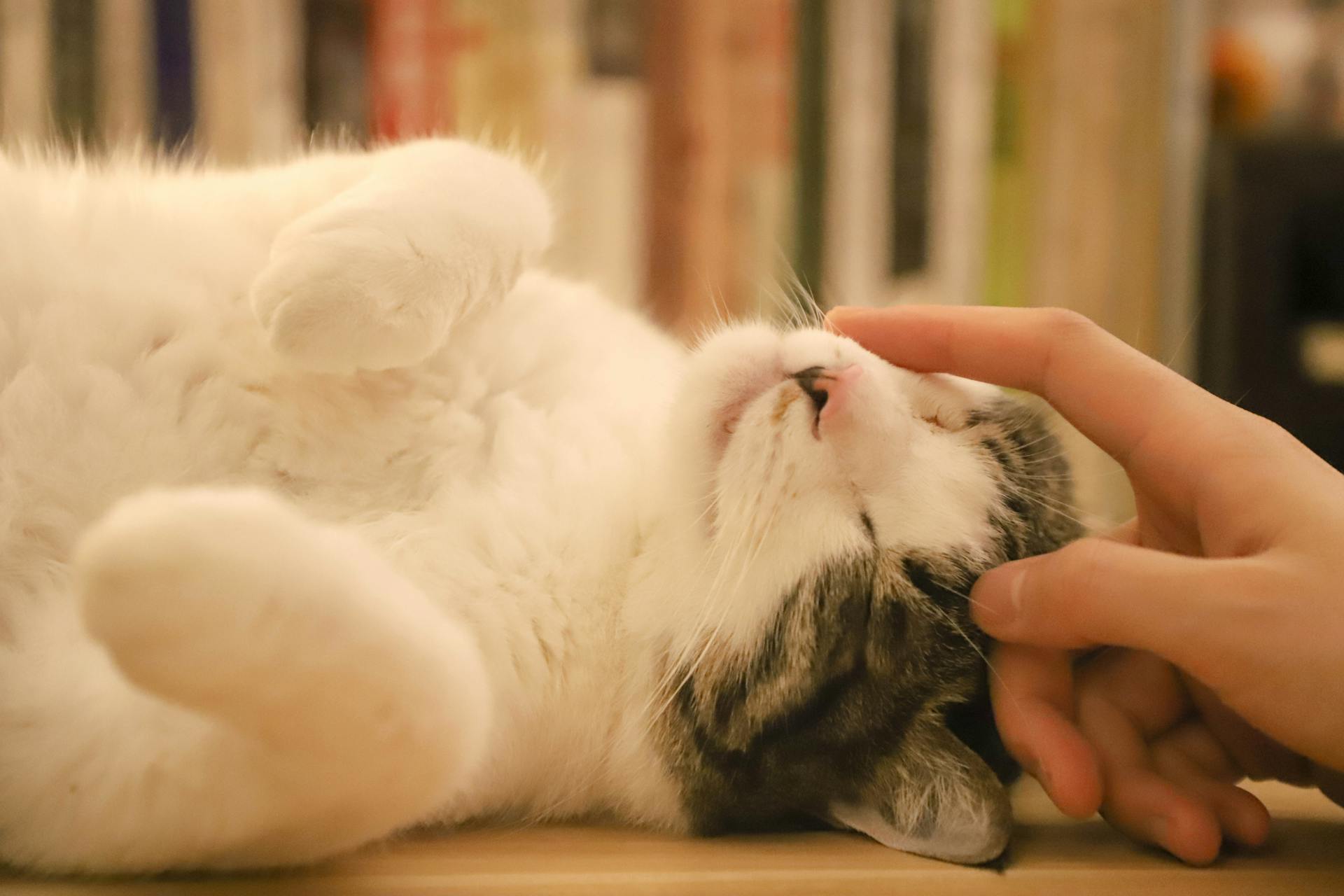
Start with short exposure sessions, less than a minute, where the dog and cat can hear and smell each other through a closed, solid door. Gradually prolong the duration of the sessions.
Let the cat and dog see each other at a distance through a barrier like a strong gate or a screen door. A double barrier is recommended at first for added safety and to create a buffer zone.
If you notice any signs of stress, stop and allow them to calm down. Try again later with shorter sessions and more distance between them.
Some people opt to start the introductions with their dog in a crate before moving on to a leash. This can help the dog feel more secure and calm.
Here's a rough guide to help you plan your introduction:
Remember, every pet is different, so be patient and adjust your introduction plan accordingly.
The First Face-to-Face Meeting
The first face-to-face meeting between your kitten and dog with prey drive is crucial, and it's best to keep them separate at first. You'll want to use a screen door or gate to separate them.
Your kitten needs to be able to smell, hear, and see your dog without touching them, so make sure the door or gate is secure. Start by feeding them from a distance and slowly move them closer to each other over time.
This gradual approach will help prevent any sudden stress or anxiety for your kitten. It's essential to keep a close eye on their interactions to ensure everyone stays safe.
Remember, kittens are small and fragile, and can be easily hurt if your dog has a strong prey drive. So, intervene if necessary to prevent your puppy from making a habit out of chasing your cat.
Start with Supervised Visits
You'll want to start slowly with supervised visits between your kitten and dog, especially if your dog has a strong prey drive. These introductions need to be done slowly, and your dog should always be on a leash. Your kitten should have places to hide or climb to that are out of your dog's way.
It's best to start on opposite sides of a room, then slowly let them be closer. Some people opt to start the introductions with their dog in a crate before moving on to a leash. Take your time, as these visits might take a few weeks or more before your pets are comfortable with each other.
Watch for signs of tense body language. If your pets are relaxed, see if you can distract them or if they stay focused on each other. Will your dog respond to your commands? Keep the visits short at first, and gradually make them longer, letting your pets be closer to each other as long as they act calmly.
Here's a step-by-step guide to help you get started:
- Start by letting your kitten and dog see each other at a distance through a barrier like a strong gate or a screen door.
- Gradually increase the duration of their interactions, always supervising and watching for signs of stress.
- If your dog is large or especially enthusiastic, leash them as an extra precaution.
- Reward your pets with treats each time they interact calmly, so they make positive associations with seeing each other.
Remember, it may take some time, but with patience and preparation, your dog and kitten will get along famously.
Introducing Pets to Dogs
Introducing pets to dogs requires patience and careful planning. A good starting point is to practice engage/disengage games with the dog separately from the cat, allowing the dog to focus on you and not the cat.
Start far away from the "trigger" and reward your dog for checking in with you at first. You can then gradually ask your dog to "work" around the distractor, such as the cat. Eventually, you'll be able to move closer to the cat.
Introducing the dog to the sight of the cat is a crucial step. Use a baby gate and tie-down to keep the dog further back from the gate, and feed them a meal while they see each other through the gate. This will help the dog associate the presence of the cat with positive reinforcement.
It's essential to observe dog and cat body language during the introduction process. A relaxed cat will move about calmly and confidently, while a dog with a strong prey drive may become fixated on the cat. If you notice signs of stress, stop and allow them to calm down.
Here are some basic steps for a cat-dog introduction:
- Confine your new pet to an area of the house for a few days where no other pet can enter.
- Start exposure through a single, closed, solid door, allowing the dog and cat to hear and smell each other.
- Let the cat and dog see each other at a distance through a barrier like a strong gate or a screen door.
- Watch the body language of both pets to get clues about how they are feeling.
- Work on training the dog to give you eye contact and calm behavior whenever the cat is visible.
Remember to seek professional help if either animal is struggling with the change in your household. A relationship-based dog trainer or behavior consultant can provide valuable guidance and support.
Managing Aggression and Seeking Help
Punishing your dog or cat for aggression won't solve the problem and could make it worse.
It's crucial to observe their body language for signs of stress or aggression, such as hissing, growling, or slinking to the ground in your cat, or barking and whining in your dog.
If your dog has a strong prey drive and fixates on your kitten, it's best to keep them separate. You want your dog to be able to look away from your cat and respond to you.
If you notice any of these aggressive behaviors, it's a good idea to enlist the help of an experienced relationship-based dog trainer or behavior consultant.
Dog Body Language
Dog body language is crucial to understanding your dog's emotions and intentions. A relaxed dog will have loose body language, but a dog showing aggression will display warning signs such as growling, stiff body posture, still eye glares, lip licking, and shaking.
For more insights, see: Dominant Dog Body Language with Other Dogs
If your dog has a strong prey drive, they might become very focused on your cat, trying to chase them. This is a sign that they don't have an unhealthy degree of interest in the cat, but it's still best to keep them separate.
A dog viewing something as prey might stiffen, stare, glare, bark, or whine, so it's essential to observe their behavior and body language carefully. If you see these signs, don't let the cat and dog get close to one another yet.
If your dog looks at the cat and then looks away, it's a good sign that they're not too excited or aroused. However, if they appear excessively focused on the cat, try calling your dog or snapping your fingers to distract them.
Your dog's body language should be loose and relaxed when interacting with a cat, and they should be able to look away from the cat and respond to you. If they don't look away, it might indicate that they're too excited or aroused.
Additional reading: Dog Body Language with Other Dogs
Understanding Dog Aggression
Understanding dog aggression is a crucial step in solving the problem. Unfortunately, some dogs are just naturally dominant towards cats, but there's almost always a reason for dog aggression.
Your dog may see your cat as prey, and some breeds have a naturally high prey drive. This can lead to aggression, especially if your dog has a history of chasing or harming cats.
Proper training can help your pets learn to live together peacefully. Creating a positive relationship through obedience training will help show your dog how to show appropriate behavior.
Jealousy can also be a root cause of dog aggression, especially if your dog feels a cat is taking too much of your attention. If you notice your dog becoming aggressive towards your cat when you pet or speak to it, making sure you give both pets equal attention could help stop dog aggression.
A dog's body language is a key indicator of their aggression level. If your dog appears excessively focused on the cat, it might indicate that they're too excited or aroused.
Additional reading: All about Dogs Dog Training
It's essential to observe your dog's body language and the cat's body language when introducing them to each other. A relaxed cat will move about calmly and confidently, while a dog fixated on a cat might stiffen, stare, glare, bark, or whine.
Some dogs can be trained to safely live with cats, but it's not easy and not guaranteed. If your dog has a strong prey drive, they might become very focused on your cat, and it's best to distract them relatively easily to ensure their behavior doesn't escalate.
True predatory aggression, especially if the dog has actually caught and harmed or killed a cat in the past, is not an easy fix. If your dog already has that sort of history, it's best to exercise caution and consider seeking professional help.
Recommended read: Best Food for Gassy Dogs
Seeking Professional Help with Introductions
Seeking professional help with dog-cat introductions can be a game-changer if you're experiencing difficulties. If either animal is struggling with the change in your household, consider enlisting the help of an experienced relationship-based dog trainer or behavior consultant.
Punishing either animal won't solve the problem and could make the situation worse, so it's essential to seek help from a professional.
A professional can help you identify the root cause of the aggression and develop a customized plan to address it.
Some signs that you may need professional help include a dog with a high prey drive, such as Beagles, Huskies, Cattle Dogs, Dobermans, Shiba Inus, and Malamutes, which may require extra vigilance when introducing them to a kitten.
A professional can also help you understand the importance of observing body language, such as a cat's relaxed demeanor, and a dog's ability to look away from the cat and respond to you.
Here are some signs that your dog may have a high prey drive:
- Stiff body posture
- Excessive focus on the cat
- Barking or whining
- Trying to chase the cat
If you notice any of these signs, it's best to keep the dog and cat separated until you can get professional help.
The Introduction Process
The introduction process is a crucial step in introducing a kitten to a dog with prey drive. You should start by letting your new kitten settle in for a few days in a separate area of the house where the dog can't enter.
This allows your kitten to feel safe and secure before introducing them to the dog. The goal is to let them get used to each other's scents and sounds before a visual introduction.
Begin by letting the kitten and dog see each other through a barrier, such as a strong gate or screen door, with a double barrier recommended for added safety. This allows them to get used to each other at their own pace.
If your dog is large or especially enthusiastic, leash them as an extra precaution. Start with short sessions of letting the dog and kitten see each other, and gradually lengthen the sessions.
Watch the body language of both pets to get clues about how they are feeling. If you notice any signs of stress, stop and allow them to calm down.
If there are no signs of stress, work on training the dog to give you eye contact and calm behavior whenever the kitten is visible. This will help the dog learn to focus on you and not the kitten.
Here's a step-by-step guide to the introduction process:
- Confine the kitten to an area of the house for a few days where the dog can't enter.
- Start exposure through a single, closed, solid door, with short sessions to begin with.
- Let the kitten and dog see each other at a distance through a barrier like a strong gate or screen door.
- Gradually lengthen the sessions and watch for signs of stress.
- Work on training the dog to give you eye contact and calm behavior whenever the kitten is visible.
Sources
- https://journeydogtraining.com/high-prey-drive-dog-live-with-kitten/
- https://www.comfortzone.com/behavior-blog/multi-pet-behavior/how-to-introduce-your-new-kitten-to-your-dog
- https://resources.bestfriends.org/article/how-introduce-cats-dogs
- https://thedogwizard.com/blog/how-to-stop-dog-aggression-towards-cats/
- https://www.rhpch.com/site/blog/2022/03/15/raise-puppy-kitten-together
Featured Images: pexels.com
